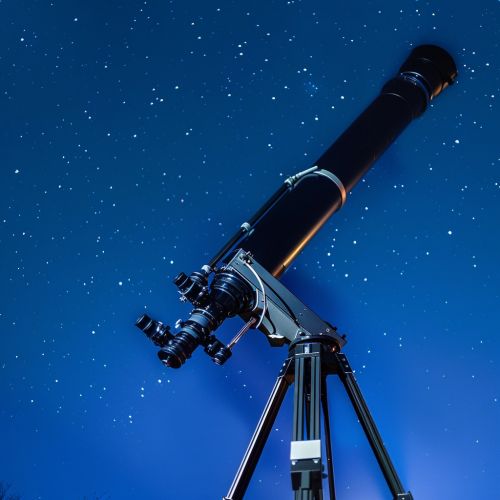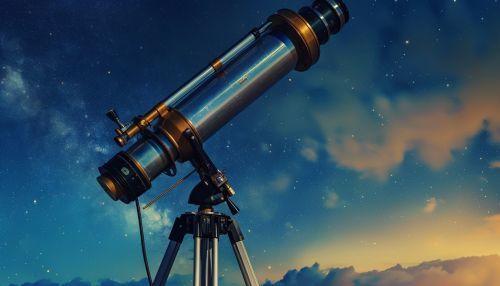Astronomical Observation
Introduction
Astronomical observation is the practice of studying celestial objects and phenomena by collecting and analyzing data from the sky. This scientific endeavor has been fundamental to the development of astronomy, providing insights into the nature of the universe, the formation and evolution of stars and galaxies, and the dynamics of celestial bodies. Observations can be conducted using various methods and instruments, ranging from the naked eye to sophisticated telescopes and space-based observatories.
Historical Background
The history of astronomical observation dates back to ancient civilizations, where early astronomers used rudimentary tools to track the movements of the Sun, Moon, and planets. Ancient cultures such as the Babylonians, Egyptians, and Greeks made significant contributions to the field. The invention of the telescope in the early 17th century by Galileo Galilei revolutionized astronomical observation, allowing for more detailed and accurate studies of celestial objects.
Methods of Observation
Optical Observation
Optical observation involves the use of telescopes to collect visible light from celestial objects. There are two main types of optical telescopes: refractors and reflectors. Refractors use lenses to gather and focus light, while reflectors use mirrors. Modern optical telescopes are equipped with advanced detectors such as CCDs to capture high-resolution images.


Radio Observation
Radio astronomy involves the detection of radio waves emitted by celestial objects. Radio telescopes, such as the Arecibo Observatory and the Very Large Array, are used to study phenomena like pulsars, quasars, and cosmic microwave background radiation. Radio observations have provided critical insights into the structure and dynamics of the universe.
Infrared Observation
Infrared astronomy focuses on the detection of infrared radiation, which is emitted by objects that are not visible in optical wavelengths. Infrared observations are conducted using ground-based telescopes equipped with infrared detectors and space-based observatories like the Spitzer Space Telescope. This method is particularly useful for studying star formation, planetary systems, and the interstellar medium.
Ultraviolet, X-ray, and Gamma-ray Observation
High-energy astronomical observations involve the detection of ultraviolet, X-ray, and gamma-ray radiation. These observations are typically conducted using space-based telescopes, such as the Hubble Space Telescope for ultraviolet, the Chandra X-ray Observatory for X-rays, and the Fermi Gamma-ray Space Telescope for gamma rays. High-energy observations are crucial for studying phenomena like black holes, supernovae, and active galactic nuclei.
Instruments and Technology
Telescopes
Telescopes are the primary instruments used in astronomical observation. They vary in design and function, ranging from small amateur telescopes to large observatories like the Keck Observatory and the European Southern Observatory. Advances in telescope technology, such as adaptive optics and interferometry, have significantly enhanced the resolution and sensitivity of observations.
Detectors
Modern astronomical observations rely on a variety of detectors to capture and analyze data. These include CCDs for optical and infrared observations, bolometers for infrared detection, and scintillation detectors for high-energy radiation. The development of more sensitive and efficient detectors has been a key factor in the progress of astronomical research.
Space-based Observatories
Space-based observatories have the advantage of being above the Earth's atmosphere, which can distort and absorb incoming radiation. Notable space observatories include the Hubble Space Telescope, the James Webb Space Telescope, and the Gaia spacecraft. These observatories have provided unprecedented views of the universe and have made significant contributions to our understanding of cosmology and astrophysics.
Observational Techniques
Photometry
Photometry is the measurement of the intensity of light from celestial objects. This technique is used to study the brightness variations of stars, the light curves of variable stars, and the luminosity of galaxies. Photometric observations can provide information about the size, temperature, and composition of celestial objects.
Spectroscopy
Spectroscopy involves the analysis of the spectrum of light emitted or absorbed by celestial objects. By studying the spectral lines, astronomers can determine the chemical composition, temperature, density, and motion of stars and galaxies. Spectroscopic techniques are essential for understanding the physical properties and dynamics of celestial objects.
Astrometry
Astrometry is the precise measurement of the positions and motions of celestial objects. This technique is used to determine the orbits of planets, the proper motions of stars, and the distances to nearby galaxies. Astrometric data are crucial for mapping the structure of the Milky Way and for detecting exoplanets through the method of stellar parallax.
Challenges and Future Prospects
Astronomical observation faces several challenges, including the limitations imposed by the Earth's atmosphere, light pollution, and the need for increasingly sophisticated technology. However, advancements in adaptive optics, space-based observatories, and computational techniques continue to push the boundaries of what can be observed and understood.
The future of astronomical observation holds exciting prospects, with upcoming projects like the Square Kilometre Array and the Extremely Large Telescope set to revolutionize our understanding of the universe. These next-generation observatories will provide deeper insights into the formation and evolution of cosmic structures, the nature of dark matter and dark energy, and the potential for life beyond Earth.
